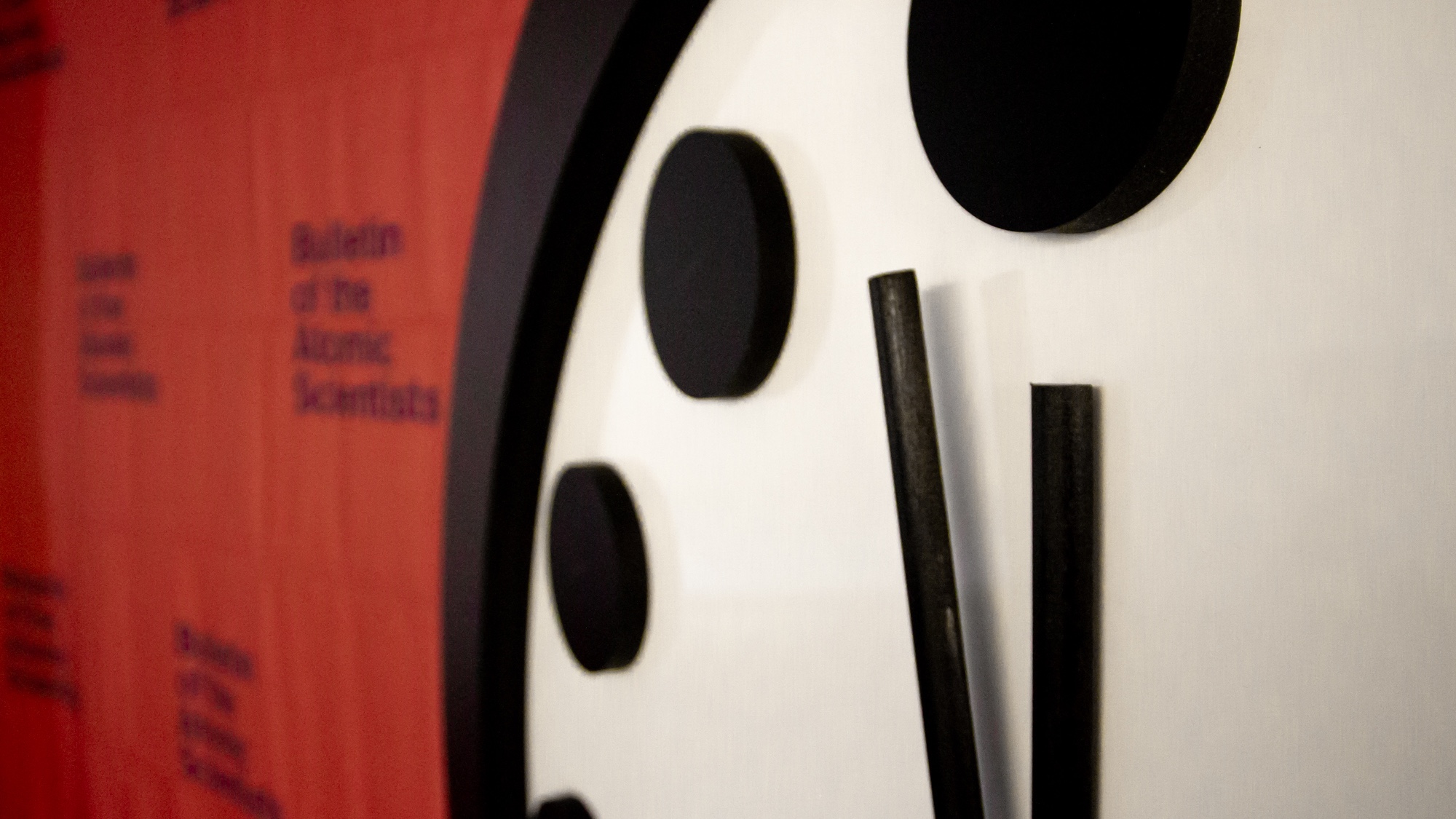

Rachel Bronson, Bulletin of Atomic Scientists To call the world's nuclear state dire is to understate the danger and its immediacy. and Soviet Union tested their first thermonuclear bombs within six months of one another. The first was in 1953, after both the U.S. This is the second time the clock has come this close to midnight. The clock, first used in 1947, is a metaphor meant to measure how close we are to destroying the world. "It is with considerable concern that we set the Doomsday Clock, as of today," Rachel Bronson, president and CEO of the organization, said during a news conference at the National Press Club in Washington, D.C. the symbolic time of civilization's destruction. You’ll get the Monitor Weekly magazine, the Monitor Daily email, and unlimited access to Bulletin of Atomic Scientists has moved the Doomsday Clock ahead by 30 seconds - to 11:58 p.m. If you’re looking for bran muffin journalism, you can subscribe to the Monitor for $15. We’re about kicking down the door of thought everywhere and saying, “You are bigger and more capable than you realize. We have a mission beyond circulation, we want to bridge divides. We’re known as being fair even as the world becomes as polarized as at any time since the newspaper’s founding in 1908. We’re run by a church, but we’re not only for church members and we’re not about converting people. The Monitor is a peculiar little publication that’s hard for the world to figure out. And I’m going to argue that we change lives precisely because we force open that too-small box that most human beings think they live in. We’re the bran muffin of journalism.īut you know what? We change lives.

We’re seen as being global, fair, insightful, and perhaps a bit too earnest. If you were to come up with a punchline to a joke about the Monitor, that would probably be it. Sometimes, we call things ‘boring’ simply because they lie outside the box we are currently in.” My work in Kenya, for example, was heavily influenced by a Christian Science Monitor article I had forced myself to read 10 years earlier. “Many things that end up” being meaningful, writes social scientist Joseph Grenny, “have come from conference workshops, articles, or online videos that began as a chore and ended with an insight.

Biosecurity is also taken into account, with the creation of an airborne strain of H5N1 flu worrying scientists in 2012.Ībout a year ago, I happened upon this statement about the Monitor in the Harvard Business Review – under the charming heading of “do things that don’t interest you”:

The decision was made based on the current state of nuclear arsenals around the globe as well as accidents such as the Fukushima nuclear meltdown that occurred in 2011 after a major earthquake and tsunami in Japan. In January 2012, the Bulletin's board set the minute hand of the clock at 11:55 p.m., one minute closer to midnight than the previous year. Langsdorf died in March 2013, but her creation lives on. In 1947, she illustrated the first Bulletin cover to feature the Doomsday Clock - set at that point at 11:53 p.m. The wife of one of these researchers, Martyl Langsdorf, was a painter. The Doomsday Clock is the invention of the Bulletin of Atomic Scientists, a publication started by some of the researchers who worked on the atomic bomb. The choice is ours, and the Clock is ticking." It's the end of the world as we know it "We can manage our technology, or become victims of it. From experience, however, we also know that new technologies can be used to diminish humanity and destroy societies," the board wrote. "As always, new technologies hold the promise of doing great good, supplying new sources of clean energy, curing disease, and otherwise enhancing our lives. The closer it is to midnight, the closer the world is to doom. The clock is no doomsday device - rather, it's a visual metaphor for the danger of a "civilization-threatening technological catastrophe." Every year, the board analyzes international threats, particularly nuclear arsenals and climate change, and decides where the minute hand on the Doomsday Clock should rest. The iconic Doomsday Clock remains poised at five minutes until midnight, the Science and Security Board of the Bulletin of Atomic Scientists announced today (Jan.


 0 kommentar(er)
0 kommentar(er)
